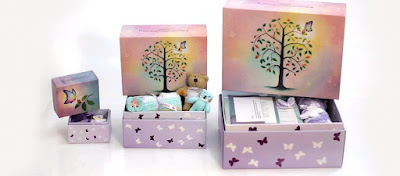Pregnancy loss and Stillbirth: A student midwife's point of view
During my third year of student placement I was fortunate enough to spend some time on our specialised ward which focuses on pregnancy loss, early pregnancy care and miscarriage management.
Initially I was extremely apprehensive to begin this placement. Honestly I was scared.
But what of?
Not the babies
Not the families
Not the situations and dealing with difficult moments
But my emotions.
Was I strong enough to look after people when some of the worst experiences have happened to them?
My belief was kind of baseless as I realised very quickly - no matter if you are a member of staff or a member of the family, you are never alone and always supported.
I attended a SANDS training day a month prior to the placement and we re-watched 'A deafening silence' - a fantastic learning resource surrounding communication during the period of pregnancy loss and still birth.
I am using both of these terms 'pregnancy loss' and 'stillbirth' as technically they have different legal and medical meanings.
Early Fetal Demise / Early Pregnancy Loss
Spontaneous loss of products of conception prior to 12 weeks gestation.
Miscarriage
Defined as spontaneous loss of products of conception before 23 weeks and 6 days of gestation.
Stillbirth
Death of a fetus after 24 week of gestation
Many find it difficult to discuss loss using terms such as demise so it is important to be sensitive when discussing with parents and families. However it is important that information is given clearly and no doubt is passed along. Phrases such as 'There is no heartbeat. Your baby has died' is often used.
The NICE Guidelines on Ectopic Pregnancy and Miscarriage (2012) suggest that women in Scotland should have access to an early pregnancy assessment unit (EPAU). This was where my placement took place. My trust's hospital is lucky to have this ward as many staff shortages and cut back sometimes threaten wards like these to close. Unfortunately then mothers undergoing miscarriage or loss then have to experience this in wards with mothers and their live babies - and non specialised care.
A number of my duties included; answering telephone calls, booking early scans, taking beta hCG blood samples, discussing management of miscarriage with families, supporting women during discussion of management of miscarriage, supporting women undergoing medical or surgical management of miscarriage and 'delivering' mothers undergoing termination of pregnancy for fetal abnormality (Many of these were non compatible with life if carried to term, or had passed away due to events such as early rupture of membranes).
Our ward used SIMBA boxes (pictures below) and although the idea of making memories, taking photographs and spending time with their babies was sometimes abnormal to families, they really appreciated the amount of time and effort we took to ensure their baby was treasured that day and for many days, years to come.
 |
| Photo from: https://www.simbacharity.org.uk/what-we-do/ |
One story which comes back to me as I write this is a fathers story of seeing a beautiful yellow butterfly in the ward outside the families room. We often used butterflies to symbolise stillborn babies. He knew, and their daughter also knew that this was their daughter/sister visiting them, although she had passed on. I cried a lot on this placement. I was never made to feel bad for this.
I was supported the entire time by the amazing team of midwives and healthcare support workers who worked tirelessly and emotionally all day for these families.
Below I have made a little infographic for student midwives. Please share!!
Ruth x
@Ruth_NQM - new twitter handle!
ABOUT THE AUTHOR
Hello We are OddThemes, Our name came from the fact that we are UNIQUE. We specialize in designing premium looking fully customizable highly responsive blogger templates. We at OddThemes do carry a philosophy that: Nothing Is Impossible




0 comments:
Post a Comment